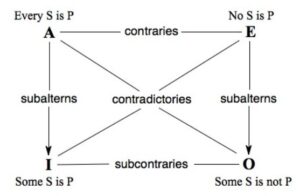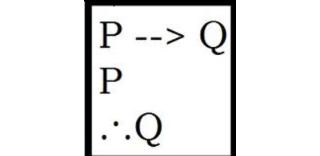Logic is the foundation of clear thinking. Aristotle was the first to lay down the rules of clear thinking in his writings including Categories, On Interpretation and Prior Analytics. In Prior Analytics he wrote about categorical syllogisms which are techniques that ensure clear thought and sound reasoning. The powerful ideas of logic lead to many discoveries later in history including mathematical proofs and statistical reasoning.
I discovered logic late in life. I wish that logic were taught in schools at a young age. In fact, medieval schools taught the trivium, which is based on language, logic and rhetoric.
Aristotle wrote about syllogisms which deal with statements called propositions. A proposition is a statement that has the property of either being true or being false. The basic idea is this:
- Start with concepts that are universally understood to be true: For example, all humans will die!
- Add a second statement that is also understood to be true. For example, I am a human.
- Conclude with a statement that must necessarily follow from the first two statements.
Aristotle’s famous example is
All men are mortal
Socrates is a man.
Therefore, Socrates will die
Structurally, the first two sentences are premises. The final statement is a conclusion.
Because no well-reasoning person would dispute the belief that all men will die, and that Socrates belongs to the group called men, it must necessarily be the case that Socrates will die. The idea can be represented in an Euler diagram like this (or in a Venn diagram):

The example above is a syllogism that has two features:
1. the word all – all is called a universal quantifier, and is the opposite of a particular quantifier.
2. refers to those things with positive membership: this is called an affirmative, which is opposite of a negative
Universal vs. Particular: What if we made a statement that was not universal? We would use a word like some or many. For example, some cars are green. Or many kids play video games. This is called a particular quantifier.
Affirmatives vs. Negatives: Socrates belongs to the set of men is an affirmative statement. The opposite of a non-affirmative statement would use words like “is not”, or “does not include”. For example, lizards are not mammals. Or women are not amphibious.
These types of syllogistic structures can be summarized as:
| TYPE | Universal | Particular |
| Affirmative | All S are P | Some S are P |
| Negative | No S are P | Some S are not P |
In considering these structures, Aristotle distinguished between
Contraries: things that cannot both be true at the same time.
Universal affirmatives and universal negatives cannot both be true
All people are honest; No people are honest. These cannot both be true
Particular affirmatives and their negatives cannot both be true
Particular: Some people are honest; some people are not honest. Both can be true.
Contradictories: A contradictory is true when its opposite is false
This is summarized in Aristotle’s Square of Opposition

I hope you can see that clear thinking will be the result if you master these concepts of logic. Clear thinking will lead to good analysis and decision making.
This post touches on some of the introductory basics of logic and syllogisms. I hope to discuss other topics in logic in future posts.
